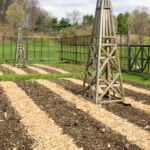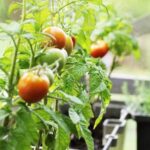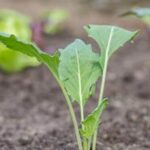When it comes to vegetable gardening, having the right tools is essential for a successful and thriving garden. From preparing the soil to planting, maintaining, and harvesting your vegetables, the tools you use can greatly impact your gardening experience and overall success. Whether you’re a beginner or a seasoned gardener, understanding the importance of choosing the right tools is crucial in achieving bountiful yields from your vegetable patch.
Having the right tools can make all the difference in your vegetable garden. The right tools not only help you work efficiently but also ensure that you are taking proper care of your plants. With the vast array of gardening tools available on the market, it’s important to choose ones that are suitable for your specific needs and preferences.
In this article, we will explore various types of gardening tools that are essential for successful vegetable gardening. From basic hand tools for maintaining your vegetable patch to power tools for optimal efficiency, we will cover a comprehensive guide that helps beginner gardeners choose their ideal equipment. We will also delve into innovative tools designed for raised bed gardening, specialized tools for organic gardening practices, and pest and weed control measures to keep your vegetable garden healthy and thriving.
By equipping yourself with the right tools tailored to your needs, you can elevate your vegetable gardening experience and achieve bountiful yields of fresh produce. So let us dive into this comprehensive guide on choosing and using the perfect tools for successful vegetable gardening.
Choosing the Perfect Tools
When starting a vegetable garden, it is important to have the right tools to ensure successful gardening. Choosing the perfect tools can be overwhelming, especially for beginner gardeners who may not be familiar with all the options available. This comprehensive guide will help beginner gardeners navigate the world of gardening tools and make informed decisions.
Firstly, it is important to consider the type of gardening you plan to do. Are you starting a small container garden on a balcony or terrace? Or perhaps you have a larger backyard where you want to develop traditional raised beds?
The size and scope of your garden will determine which tools are necessary. For smaller gardens, basic hand tools such as a trowel, hand rake, and pruning shears may suffice. However, for larger gardens or more advanced gardening techniques, power tools like tillers or hedge trimmers may be needed.
Secondly, consider the quality and durability of the tools. Investing in good quality tools may cost more initially but will save money and frustration in the long run. Look for tools made of high-quality materials that can withstand outdoor conditions and heavy use. Additionally, ergonomic features such as cushioned handles or adjustable lengths can make gardening tasks more comfortable and efficient.
Finally, it is important to choose tools that are suited for your physical abilities and comfort level. Gardening can be physically demanding, so choosing tools that are lightweight and easy to handle can prevent strain or injury. Consider your own strength and mobility when selecting items such as shovels or rakes.
| Tool | Function |
|---|---|
| Trowel | Used for digging small holes for planting seeds or transplants. |
| Garden Fork | Used for breaking up compacted soil and loosening roots. |
| Weeder | Used for removing weeds from the garden. |
| Pruning Shears | Used for trimming and shaping plants, as well as removing dead or damaged foliage. |
| Garden Gloves | Protects hands from thorns, sharp objects, and chemicals. |
By considering the type of gardening, quality of tools, and personal comfort, beginner gardeners can choose the perfect tools that will set them up for successful vegetable gardening. Once equipped with the right tools, they can confidently begin their gardening journey.
Essential Hand Tools
Garden Gloves
One of the most essential hand tools for vegetable gardening is a good pair of garden gloves. Gloves provide protection against dirt, thorns, and other possible injuries while working in the garden. They also help prevent blisters and calluses that can develop from repetitive movements such as digging or weeding. When choosing gardening gloves, it is important to find a pair that fits well and offers durability without sacrificing dexterity.
Trowel
A trowel is another must-have hand tool for maintaining your vegetable patch. This small handheld tool is perfect for digging small holes for transplanting seedlings, removing weeds, or loosening soil around plants. Look for a trowel with a sturdy steel blade and a comfortable handle grip to ensure ease of use.
Hand Pruners
Hand pruners are essential for trimming and shaping plants in your vegetable garden. They are particularly useful for cutting back overgrown foliage, deadheading flowers, or harvesting vegetables. When selecting hand pruners, consider ones with sharp blades made of high-quality steel to ensure clean cuts without damaging the plants.
Garden Fork
A garden fork is an indispensable tool when it comes to loosening compacted soil in your vegetable patch. It helps break up clumps of soil and allows roots to penetrate deep into the ground for better nutrient absorption. Additionally, a garden fork can be useful for lifting and turning compost piles. Choose a garden fork with strong tines made of durable materials like stainless steel or carbon steel.
By having these essential hand tools in your arsenal, you will be equipped with the necessary equipment to maintain your vegetable patch effectively.
Power Tools for the Pro Gardener
When it comes to vegetable gardening, power tools can be a game-changer for professional gardeners. These tools not only enhance efficiency but also ease the physical burden that comes with maintaining a large vegetable patch. Whether you’re a seasoned gardener or just starting out, investing in power tools can significantly improve your gardening experience.
One essential power tool for pro gardeners is a rototiller. This machine helps to break up the soil and prepare it for planting. Rototillers come in different sizes and power options, so it’s crucial to choose one that suits the size of your garden. With a rototiller, you’ll be able to save time and energy when it comes to preparing your vegetable beds.
Another indispensable power tool is a garden tiller cultivator, which is particularly useful for larger vegetable gardens. This versatile machine not only tills the soil but also cultivates it after planting. It helps you maintain loose, well-aerated soil while preventing weeds from taking over. Having a tiller cultivator can save significant time compared to manual weeding and cultivation methods.
In addition to these main power tools, there are other useful options that pro gardeners may consider adding to their arsenal. For example, an electric trimmer can help maintain neat edges around your vegetable beds or pathways. Leaf blowers are effective at clearing away debris and fallen leaves from your garden quickly.
Investing in power tools may require an upfront cost but will ultimately prove worthwhile with the increased efficiency they bring to your gardening routine. These tools not only make maintenance tasks easier but also allow you to spend more time enjoying your bountiful harvests rather than struggling with manual labor.
Innovative Tools for Raised Bed Gardening
Raised bed gardening is a popular choice for individuals with limited space or poor soil conditions. By elevating the planting area and filling it with nutrient-rich soil, gardeners can maximize their yield in a small space. To further enhance the productivity of raised beds, there are several innovative tools available that can make gardening in these compact areas even more efficient and successful.
One type of tool that is particularly beneficial for raised bed gardening is a long-handled weeder. These tools typically have an extended handle with a sharp blade at the end, allowing you to easily reach into the raised bed without stepping on the plants or damaging the soil structure. Long-handled weeders are especially useful for removing weeds from between closely spaced plants, as they can effectively reach into tight spaces and cut off weeds at their roots.
Another innovative tool for raised bed gardening is a vertical planter. These planters feature multiple tiers or pockets that allow you to grow a large number of plants vertically, maximizing your growing space. Vertical planters are perfect for crops like strawberries, lettuce, herbs, and flowers, as they provide ample room for root growth while taking up minimal horizontal space.
In addition to long-handled weeders and vertical planters, there are also unique watering systems available specifically designed for raised bed gardens. These systems usually consist of drip irrigation or soaker hoses that can be easily placed along the length of the beds. They provide consistent and targeted watering to each plant’s root zone, ensuring optimal hydration and reducing water waste.
Overall, using innovative tools specifically tailored to raised bed gardening can greatly enhance your ability to maximize your yield in limited space. From long-handled weeders that make weeding a breeze to vertical planters that allow you to grow more plants in less area, there are many options available to help you achieve bountiful harvests from your raised bed garden.
| Tool | Description |
|---|---|
| Long-handled weeder | A tool with an extended handle and a sharp blade for reaching into raised beds, allowing easy weed removal without damaging plants or soil |
| Vertical planter | A multi-tiered or pocketed planter that enables vertical gardening, maximizing the number of plants you can grow in limited space |
| Raised bed watering system | Drip irrigation or soaker hoses designed to provide targeted and efficient watering to each plant’s root zone in raised beds, reducing water waste |
Specialized Tools for Organic Vegetable Gardening
Why Choose Organic Vegetable Gardening?
Organic vegetable gardening has become increasingly popular as people strive to live a more sustainable and environmentally-friendly lifestyle. By avoiding the use of synthetic fertilizers, pesticides, and herbicides, organic gardeners promote soil health, protect pollinators and beneficial insects, and produce nutrient-rich crops. To successfully embrace organic gardening practices, using specialized tools designed specifically for this approach is essential.
The Benefits of Specialized Tools
Specialized tools for organic vegetable gardening not only help in creating a healthy and thriving garden but also minimize the environmental impact of gardening activities. These tools are designed to handle tasks specific to organic gardening methods, making them efficient, effective, and user-friendly. They can contribute to reducing waste production, conserving energy, saving water, and promoting sustainable practices.
Essential Specialized Tools for Organic Gardeners
- Compost Thermometer: Monitoring compost temperature is crucial for successful composting. A compost thermometer allows organic gardeners to accurately measure the internal temperature of the compost pile or bin. This helps in determining if the compost is heating up sufficiently to break down materials properly and kill any harmful pathogens or weed seeds.
- Hand Weeder: Organic gardeners often face challenges with weeds since they cannot rely on chemical herbicides. A hand weeder with a long handle helps gardeners easily remove weeds from their vegetable patch without damaging surrounding plants or disturbing the soil structure.
- Organic Fertilizer Spreader: Applying organic fertilizers evenly on your vegetable beds can be a tedious task without the right tool. An organic fertilizer spreader ensures that the nutrients are distributed uniformly across your garden while minimizing waste and runoff.
- Cover Crop Roller: Cover cropping is an important practice in organic gardening as it helps improve soil fertility and prevent erosion during periods when crops are not actively grown. A cover crop roller enables you to easily terminate and roll down cover crops, incorporating them into the soil as green manure.
By utilizing these specialized tools, organic gardeners can simplify their gardening tasks, achieve better results, and contribute to a more sustainable food production system. Embracing these tools helps gardeners stay true to the principles of organic vegetable gardening while maximizing their yield and ensuring the healthiest produce possible.
Tools for Pest and Weed Control
Pest and weed control is essential in maintaining the health and productivity of your vegetable garden. Uncontrolled pests can quickly decimate your crops, while weeds compete for resources and nutrients. To keep your vegetable garden thriving, it’s crucial to have the right tools for pest and weed control.
One indispensable tool for pest control is a handheld sprayer or mister. These tools allow you to apply organic insecticides or homemade pest sprays precisely where they are needed, reducing the risk of harming beneficial insects or contaminating your vegetables. Look for handheld sprayers with adjustable nozzles for different spray patterns and volume control.
Another helpful tool for pest control is a bug vacuum or catcher. These devices use suction or traps to safely remove insects from your plants without causing harm. They are particularly useful for capturing flying insects like aphids, whiteflies, or leafhoppers that can damage your crops.
An HTML unordered list example:
- Handheld sprayer
- Bug vacuum
- Row covers
- Garden gloves
Weeds can quickly take over your vegetable garden if left uncontrolled. One of the most effective tools for weed management is a hoe. With different types of hoes available (such as push/pull hoes or scuffle hoes), you can choose the one that suits your needs best. Hoes help loosen soil, chop off weeds at their roots, and create paths between rows of vegetables.
For larger areas with persistent weeds, a weed trimmer or string trimmer can be very useful in cutting down vegetation quickly. These power tools have rotating nylon strings that slice through grasses and small shrubs without damaging surrounding plants.
An HTML ordered list example:
- Hoe
- Weed trimmer/string trimmer
- Weeding fork
- Flame weeder
By equipping yourself with the right tools for pest and weed control, you can ensure the health and vitality of your vegetable garden. Regular monitoring, proper identification of pests and weeds, and prompt action will help you keep these problems at bay. Remember to always follow the instructions on any pesticides or herbicides you use, and consider organic or natural options whenever possible to promote a healthy ecosystem in your garden.
Smart Gardening Tools
The advent of technology has revolutionized every aspect of our lives, including the world of gardening. With the introduction of smart gardening tools, vegetable growers can now harness the power of technology to enhance plant growth and care. These innovative tools are designed to provide precise information, automate tasks, and optimize conditions for optimal plant health.
One essential smart tool for vegetable gardening is a digital soil testing kit. This tool enables gardeners to analyze the nutrient levels, pH balance, and moisture content in their soil accurately. By knowing these parameters, gardeners can adjust their fertilizer and watering practices accordingly to provide the ideal conditions for their vegetables to thrive.
Another useful smart gardening tool is a weather station. This device collects real-time weather data such as temperature, humidity, rainfall, and wind speed. By having access to this information, gardeners can make informed decisions about when to water their plants or cover them during extreme weather conditions. Some advanced weather stations even come with wireless connectivity features that send data directly to a smartphone or computer for easy monitoring.
In addition to soil testing kits and weather stations, there are also smart irrigation systems available for vegetable gardens. These systems use sensors to measure soil moisture levels and automatically adjust watering schedules based on those readings. This not only saves water but also ensures that plants receive the right amount of hydration at all times.
While traditional gardening methods have proven effective over time, incorporating smart gardening tools can greatly improve efficiency and success rates in vegetable growing. By harnessing technology for optimal plant growth and care, gardeners can take advantage of accurate data, automation, and customized solutions tailored to their specific needs.
Smart Gardening Tools: Benefits at a Glance
Here is a list highlighting some benefits of using smart gardening tools:
- Accurate monitoring: Smart tools provide real-time information on soil nutrients, moisture levels, weather conditions which allows for timely adjustments in gardening practices.
- Time-saving automation: With smart irrigation systems, gardeners can automate watering schedules to ensure plants receive adequate moisture without manual intervention.
- Conservation of resources: By using data-driven approaches with smart tools, gardeners can optimize resource allocation like water and fertilizer, resulting in reduced waste and improved sustainability.
- Increased yield and quality: Technology-driven solutions enable gardeners to create the ideal conditions for vegetable growth, leading to higher yields and better produce quality.
Tool Maintenance and Storage Tips
Proper maintenance and storage of your garden tools are essential to ensure their longevity and optimal performance. By following some simple tips, you can protect your investment and have them ready whenever you need them. Here are some tool maintenance and storage tips to help extend the lifespan of your garden equipment.
Firstly, it is important to clean your tools after each use. Soil and moisture can accumulate on the surface, leading to rust and corrosion. Use a wire brush or steel wool to remove any dirt or debris from your tools. For stubborn stains, you can soak them in a bucket filled with warm soapy water before scrubbing.
After cleaning, dry your tools thoroughly before storing them. Moisture can promote rusting, so make sure they are completely dry before putting them away. You can wipe them with a cloth or towel, or even leave them out in the sun for a while to air dry.
Another important aspect of tool maintenance is sharpening. Sharp tools make gardening tasks easier and more efficient. Use a file or sharpener appropriate for the type of tool you are sharpening. Take extra care when sharpening blades and keep a consistent angle for an effective edge.
When it comes to storage, keeping your tools organized will prevent accidental damage and save you time searching for what you need. Invest in a good quality toolbox or tool shed where you can store all your gardening equipment in one place. Make sure there is enough space for each tool so they don’t rub against each other, leading to wear and tear.
In addition, consider hanging tools with long handles on hooks or pegboards to save floor space and keep them easily accessible. Small hand tools can be stored in pockets or hung on smaller hooks within reach when needed.
By following these maintenance and storage tips, you can extend the lifespan of your garden equipment, saving money in the long run and ensuring that your tools are always in optimal condition for your vegetable gardening needs.
Conclusion
In conclusion, having the right tools is essential for successful vegetable gardening. Whether you are a beginner gardener or a seasoned pro, choosing the perfect tools can make all the difference in maintaining and maximizing your yield.
Hand tools are must-have items for any vegetable patch, providing precision and control when tending to your plants. Power tools can enhance efficiency and ease the burden of more labor-intensive tasks, while specialized tools for raised bed and organic gardening allow you to fully utilize limited space and embrace sustainable practices.
Additionally, tools for pest and weed control are crucial in keeping your vegetable garden healthy and thriving. These tools help to prevent damage caused by unwanted visitors and keep your plants free from harmful weeds.
And let’s not forget about the advancements in smart gardening tools that harness technology for optimal plant growth and care. From automated irrigation systems to soil sensors that monitor moisture levels, these tools take the guesswork out of gardening and help ensure your plants receive exactly what they need.
Lastly, proper tool maintenance and storage tips are important to consider if you want to extend the lifespan of your garden equipment. Regular cleaning, sharpening blades, oiling moving parts, and storing them in a dry place will keep your tools in top shape year after year.
Frequently Asked Questions
What tools do I need for my vegetable garden?
When starting your vegetable garden, there are a few essential tools that you’ll need. First and foremost, a good quality shovel or spade will be necessary for digging and preparing the soil. A garden fork is also useful for loosening compacted soil and breaking up clumps.
Additionally, a high-quality pair of hand pruners will come in handy for trimming and maintaining your vegetable plants. Other important tools include a watering can or hose for irrigation, gardening gloves to protect your hands, and a garden rake for smoothing out the soil surface. Depending on the size of your garden and specific needs, you may also require items like a wheelbarrow or trowel.
What basic gardening tools will you need?
To start with basic gardening tasks, there are several essential tools that every gardener should have. A sturdy pair of gardening gloves is crucial to protect your hands from thorns, sharp edges, and dirt. A reliable hand trowel will be indispensable for tasks such as transplanting seedlings or planting small bulbs.
A long-handled shovel is another fundamental tool that can help with digging larger holes or moving larger amounts of soil. Having pruning shears on hand allows you to cut back branches or trim plants as needed throughout the growing season. Lastly, a garden fork serves multiple purposes such as turning over soil, lifting up weeds by their roots, or mixing in compost.
How do I choose the best garden tools?
Choosing the best garden tools involves considering several factors to ensure they meet your needs effectively. Firstly, it’s important to assess the quality and durability of the tools you’re considering purchasing. Look for well-built tools made from sturdy materials that can withstand regular use without easily breaking or corroding.
Secondly, think about whether the tool is ergonomically designed and comfortable to hold and use for extended periods of time – this is particularly relevant for hand-held tools such as pruners or trowels. Additionally, consider the specific requirements of your garden; for example, if you have a small space, compact or multi-purpose tools might be more suitable. Lastly, it’s always helpful to read reviews, seek recommendations from experienced gardeners, or consult with local gardening experts who can advise on the best tools for your particular gardening needs and conditions.

If you’re looking to get into vegetable gardening, or are just looking for some tips on how to make your current garden better, then you’ve come to the right place! My name is Ethel and I have been gardening for years. In this blog, I’m going to share with you some of my best tips on how to create a successful vegetable garden.





